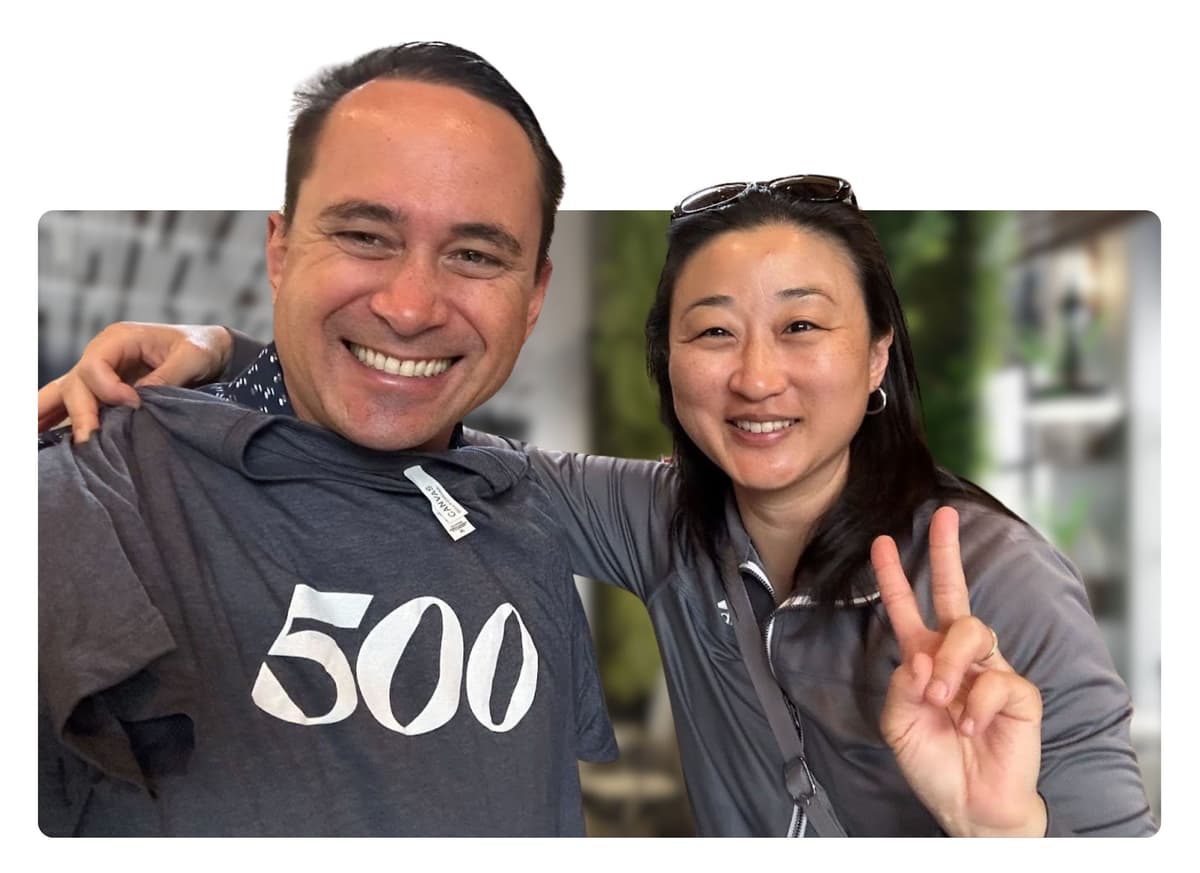Guest Post: The following post is a sponsored guest post by Noteh Krauss. All views and opinions represented in this post are the views and opinions of Krauss and do not represent those of 500 Startups or any of its staff or affiliates.
2020.03.09

Guest Author

Guest Post: The following post is a sponsored guest post by Noteh Krauss. All views and opinions represented in this post are the views and opinions of Krauss and do not represent those of 500 Startups or any of its staff or affiliates.
As a designer with my own agency and a mentor to dozens of Silicon Valley startups, I’ve come across my fair share of design challenges. Though every client or startup I advise is different, I’ve spotted some patterns of design issues that founders seem to miss.
Despite the fact that my design career began with a personal interest in design and aesthetics in Kazakhstan, most of my work was centered around North American companies with North American users. When I was invited to come to the Moscow accelerator with 500 Startups as a design mentor I wondered — would my design knowledge-base apply to the Russian context?
The short answer is — yes. The long answer is: by supporting startups in Russia, I actually clarified 3 design keys that I believe apply to startups anywhere.
GURUCAN — Achieving High Onboarding Completion for a Complex Application
Gurucan is a custom app template system for people to create and sell online courses. It is an all-in-one platform to run a successful digital business.
Overview and Outcome
Gurucan started off with an overwhelming dashboard. We worked on minimizing it to the most essential things needed for the user to complete registration. Our goal was to go from complex and overwhelming to simple and straightforward.
With a couple of design sprints we managed to get five times boost of sign up conversion and 90% finished the onboarding process.
“We did a ton of things for the last few design sprints and got a 5x boost of our signup conversion. We also managed to get 90% of our signups to create a course on our platform, which is an important activation metrics for us. The approach that Noteh taught us lead Gurucan to a way better retention and helped us keep churn at almost zero level.”
-Dima Ponimarev, Co-Founder and CTO of Gurucan
Challenge
Gurucan struggled in their onboarding process in which not enough people were finishing signing up. The onboarding process is a series of screens that introduce the user to the application/software, get them to complete their registration, and teach them how to successfully use the app. It is a user’s first impression and the most critical phase for app retention.
At that time there were two critical issues with Gurucan’s onboarding
- Gurucan focused too much on showcasing the plethora of functions, that they did not notice how overwhelming it was for a first time user. For a complex application like Gurucan, this is their strength — but when not presented right it can become a weakness.
- Following, the first problem the onboarding process was presented in a way that was convoluted and easy to get lost in.
Process
Initially Gurucan had an onboarding process much like a tour, jumping around from function to function. Dictating everything the user must do. This would confuse the users and swamp them with too much information, leading to users not finishing registration.
Once we understood why the users were struggling to sign up, and I asked the Gurucan team to evaluate what was the absolutely most essential things necessary for the user to input in order for that user to see value.
Success
After a few design sprints, we achieved a 90% onboarding completion rate. Sign up conversion had gone up 5x since the first iteration.
NAIVE SOFTWARE — Building User Trust
Naive is an AI software for video editing that automatically separates defective frames and cuts them out for you. Simplifying and saving time in the whole editing process.
Overview and Outcome
Naive software had built an incredible algorithm that worked like magic. Naturally the team was really proud. However, to the founders’ frustration, this also brought out a lot of trust issues because the users could not believe that their algorithm could work as well as it did right off the bat and without input from the user on their video.
We worked on building trust by putting users in the drivers seat of the Algorithm. Making the software into an invaluable creative tool to video editors.
“The knowledge we got helped us greatly enhance our UX based on new use case scenarios. We have also tested several new hypotheses through the survey of existing and potential users”
-Jack Chernov, Founder of Naive
Challenges
Users had low trust for Naive’s algorithm due to a lack of transparency on its algorithm’s decision making parameters. Expecting a user to simply comply with the Algorithm’s decisions, no questions asked built trust issues. Users wanted to know why a frame was chosen to be cut out and worried they would lose valuable footage that might not be technically perfect.
Process
During the workshops we built upon the personas for who NAIVE was designing for. Naive envisioned a persona who was bored of wedding videos and simply wanted the footage to be cut out automatically.
We went back on building personas to challenge that idea and create an alternate persona who was more creatively inclined, artistic, and passionate about their unique eye when it came to video.
With this second persona, it became apparent that the current concept only worked for the first. The addition of a second archetype led to an expansion of the user experience that gave control, sought transparency and actively used the product as a tool.
We worked on adding a set of sliders that would allow the user to control the parameters of how the video is cut. By doing so, we could satisfy both personas, share the decision making parameters of the algorithm, and put the user in the driver’s seat.
Success
Naive software kept the default setting that would allow the users to magically cut out bad footage but also have the option to control what to do with the footage. In addition by giving this control back, we were able to solve the trust issue and create transparency on how the footage was cut.
MEDS.IS— From Free to Freemium
Meds.is is an information source to find out the efficacy of pharmaceuticals in Russia. Meds.is assists in the selection and verification of medicines to find the most effective, safe and beneficial medications. The lack of reliable information in the Russian context was a critical driver of people to Meds.is.
Overview and Outcome
Meds.is was essentially a free encyclopedia of pharmaceuticals. For the startup to survive, it needed to somehow follow a path of monetization. Together, we explored a Freemium model to test if users would sign up and pay for more detailed information. We all agreed that a base level of information should be free out of public interest and made the most sense considering why people in Russia were looking for a website like Meds.is.
“Noteh changed the way I think about product development & design. I learned before you do anything try to place yourself on the user, as the user acts in the way he acts. This will help us create high Clickthrough rate pages/screens.”
-Kirill Burkhanov, Founder of Meds.is
Challenge
Initially, was equivalent to an open encyclopedia of drug efficacy. However, even though all the information was available for the open public, users were not signing up nor venturing deeper into the sight.
The challenge was that Meds.is wanted to follow a path of monetization and see if people would sign up (and pay) to access more information. To do so we would need to stagger the information so the user can get a certain amount of info for free and then make a decision to sign up to get extended, detailed information.
Process
Initially, Meds.is had all their information available for free. Even though the information was free and open for everyone there were zero sign ups and very click-throughs.
First, we whiteboard how to stratify the information, keeping in mind we wanted to give people enough info to maintain the public benefit of the site. Then I guided the team on the wireframes and page organization to create a new sign up process.
This animation alone created a 1% improvement in clickthrough. On the right, the full information, after collecting email.
Success
Within a couple of iterations in a span of a week we went from zero people signing up to a 3% conversion rate. The higher clickthrough rate actually led to an increase in engagement and unique users rose from 870 to 3400 per day.
EunJi Jung contributed to this article.
NOTE: NOTEH KRAUSS IS A GUEST POSTER AND ANY VIEWS OR OPINIONS REPRESENTED IN THE ABOVE POST ARE PERSONAL AND DO NOT REPRESENT THOSE OF 500 STARTUPS OR ANY OF ITS STAFF OR AFFILIATES UNLESS EXPLICITLY STATED. ALL CONTENT REPRESENTED ABOVE IS PROVIDED FOR INFORMATIONAL PURPOSES ONLY. 500 STARTUPS MAKES NO REPRESENTATIONS AS TO THE ACCURACY OR COMPLETENESS OF ANY INFORMATION CONTAINED IN THE ABOVE POST. NO LIABILITY CAN BE ACCEPTED FOR ANY ERROR OR OMISSIONS. UNDER NO CIRCUMSTANCES SHOULD ANY OF THE ABOVE CONTENT BE CONSTRUED AS LEGAL, TAX OR INVESTMENT ADVICE FROM 500 STARTUPS OR ANY OF ITS AFFILIATES. 500 STARTUPS DOES NOT GUARANTEE ANY FUTURE RESULTS FOR ANY DECISIONS MADE BASED IN WHOLE OR IN PART ON THE CONTENT OR INFORMATION CONTAINED IN THIS POST.
UNDER NO CIRCUMSTANCES SHOULD ANY INFORMATION OR CONTENT IN THIS POST, BE CONSIDERED AS AN OFFER TO SELL OR SOLICITATION OF INTEREST TO PURCHASE ANY SECURITIES. UNDER NO CIRCUMSTANCES SHOULD ANYTHING HEREIN BE CONSTRUED AS FUND MARKETING MATERIALS BY PROSPECTIVE INVESTORS CONSIDERING AN INVESTMENT INTO ANY 500 STARTUPS INVESTMENT FUND.
ALL LOGOS AND TRADEMARKS OF THIRD PARTIES REFERENCED HEREIN ARE THE TRADEMARKS AND LOGOS OF THEIR RESPECTIVE OWNERS. ANY INCLUSION OF SUCH TRADEMARKS OR LOGOS DOES NOT IMPLY OR CONSTITUTE ANY APPROVAL, ENDORSEMENT OR SPONSORSHIP OF 500 STARTUPS BY SUCH OWNERS.



